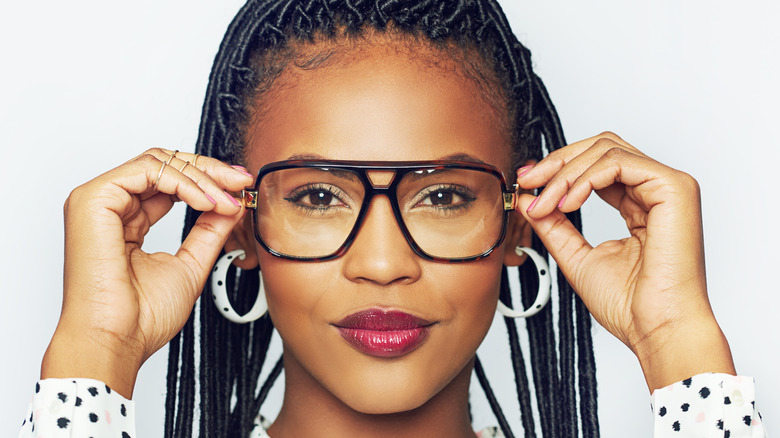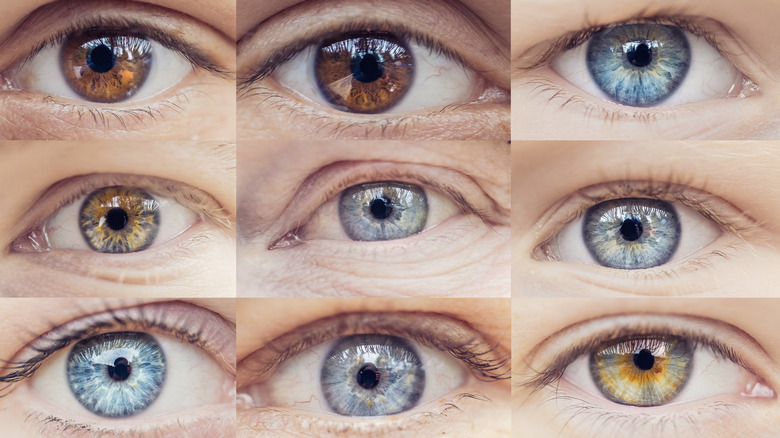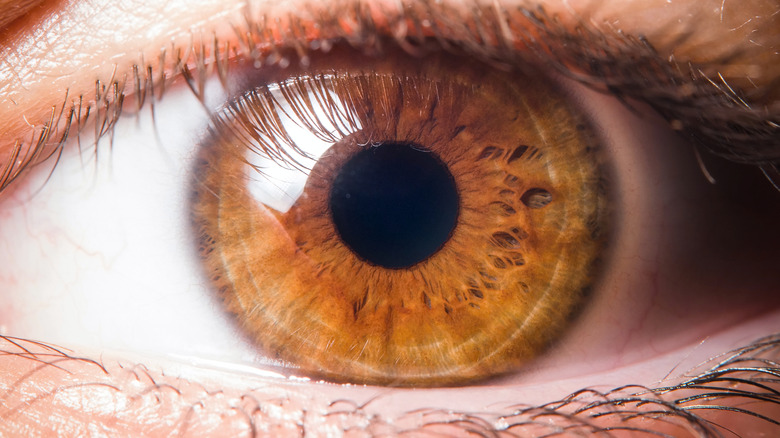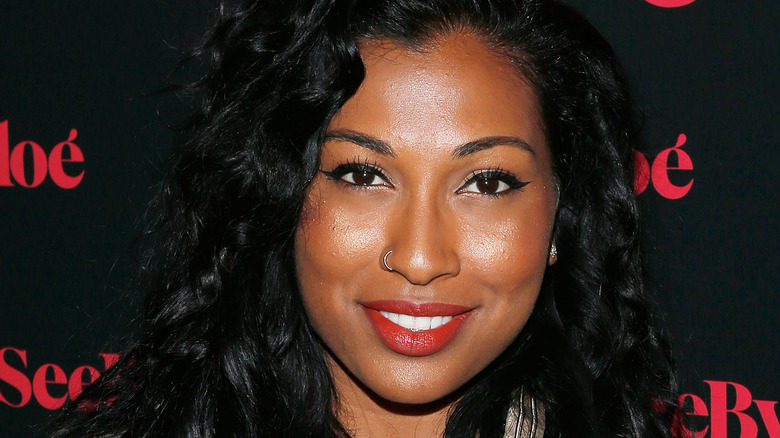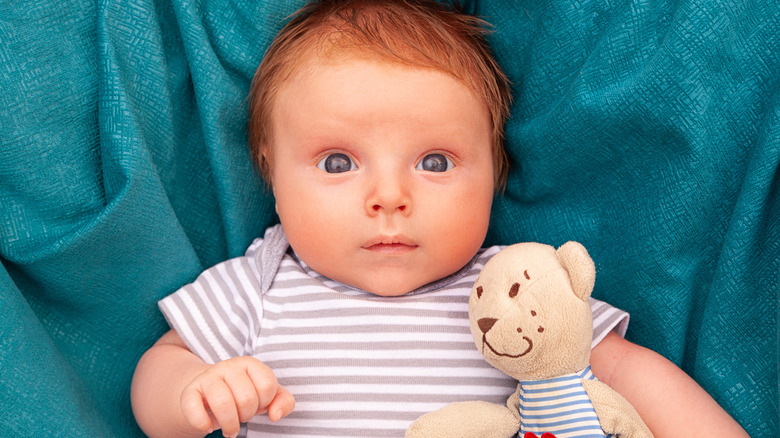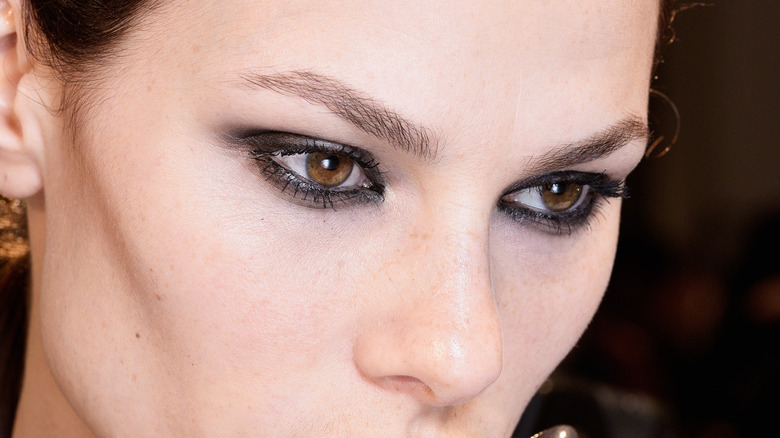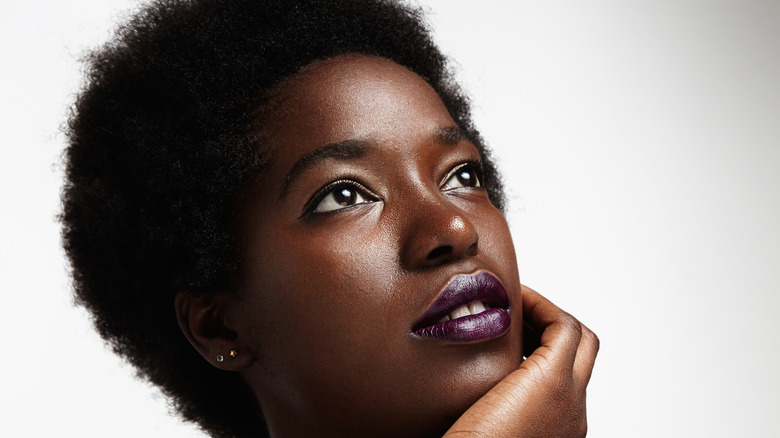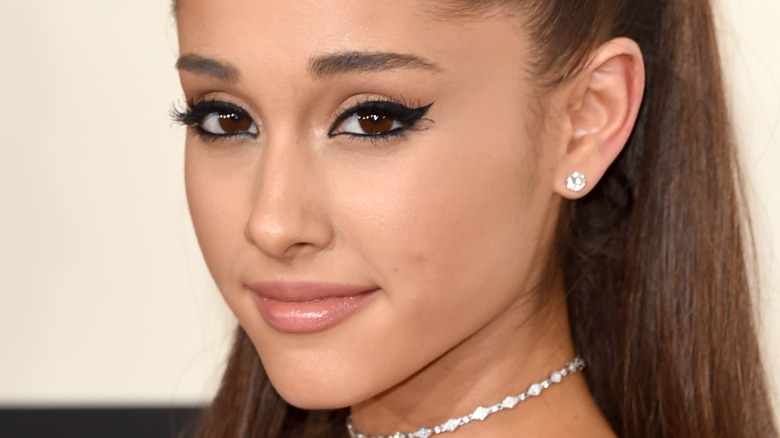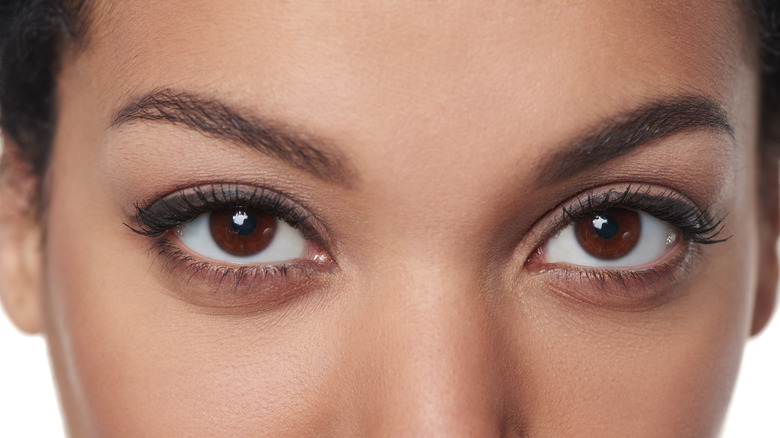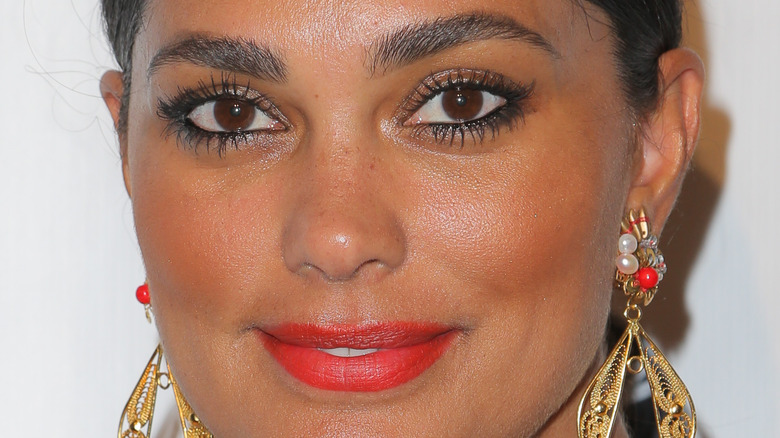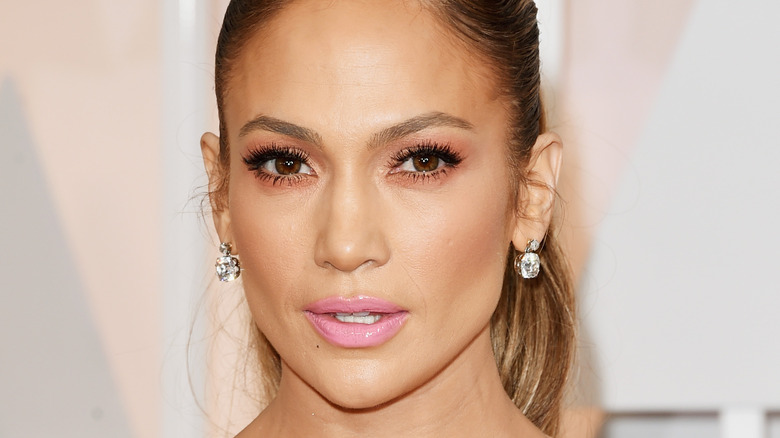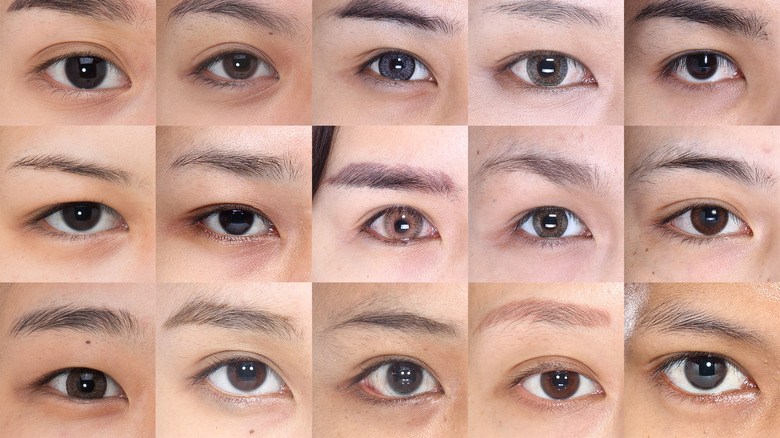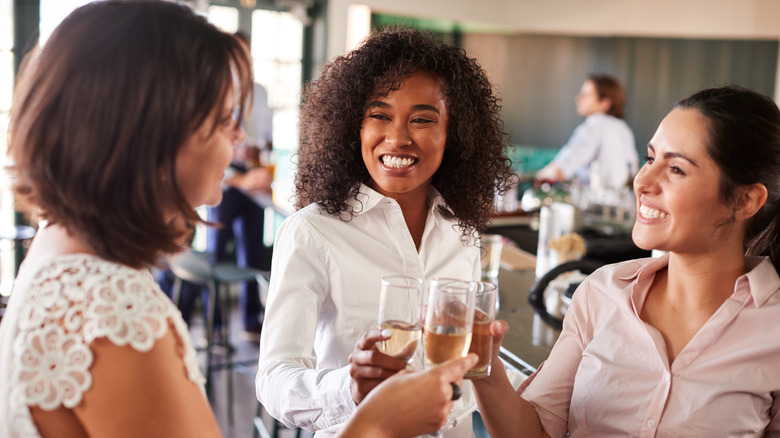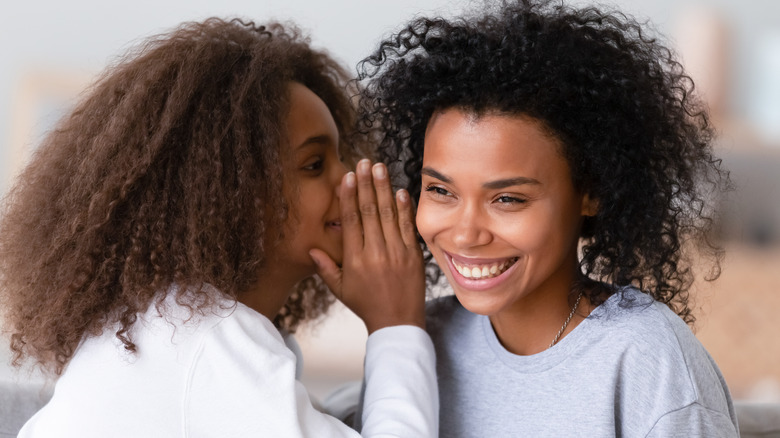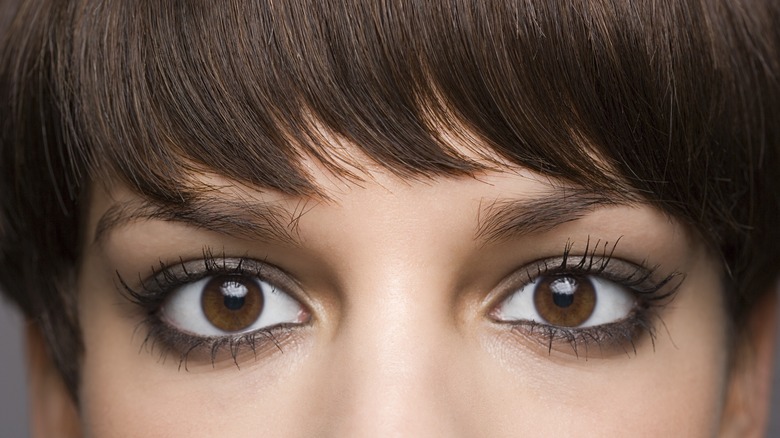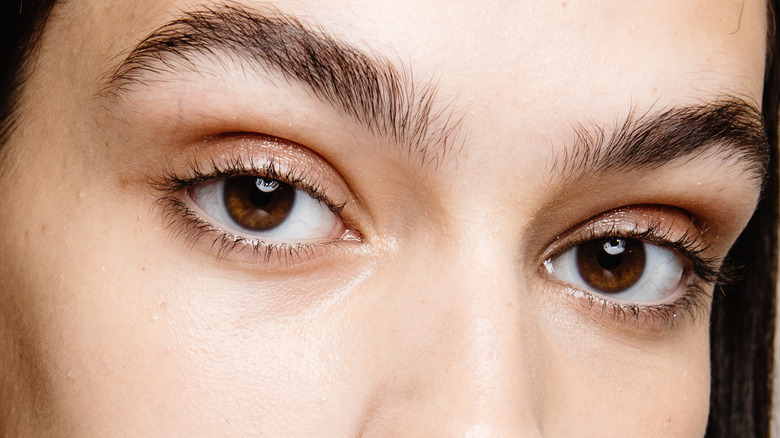The Truth About Brown Eyes
Perhaps the most underappreciated, underrated, and under-celebrated eye color is the humble brown eye. While there are plenty of songs out there celebrating the beauty of blue eyes, and no shortage of ballads about green eyes, those who are of the brown-eyed persuasion have far less to choose from. But we see you, Van Morrison, so thank you for not forgetting about the beautiful brown-eyed girl who stole your heart.
Despite the dearth of celebratory songs for brown-eyed folks, there's a wealth of information about coffee-colored peepers out there, and some of it is downright fascinating. There are also plenty of celebs with brown eyes, showing that the beauty of brown eyes is not totally ignored or neglected.
So what are some of those need-to-know facts about brown eyes that you can use to give your blue and green eyed pals what for? What diseases and conditions are brown-eyed people more or less prone to? And are brown-eyed people really more trustworthy than everyone else? Read on to find out all you need to know about brown eyes.
Brown eyes are overwhelmingly the most common
It's pretty well-known that brown eyes are the most common eye color in the world. But it's not just common — it's overwhelmingly common, to the tune of 79 percent of the world's population, according to World Atlas. The next most common eye color in the world is blue, which clocks in at 8-10 percent, mostly present in European countries. Hazel eyes clock in at 5 percent, as do amber eyes, followed by green eyes at a paltry 2 percent. And each of the following colors are less than one percent of the world's population: gray eyes, red/violet eyes (in people with severe forms of albinism), and heterochromia (different colored eyes).
Most of the people on the African and Asian continents have brown eyes, according to an article in All About Vision. Dark eye color is also prevalent in the Middle East and The Americas, although in the United States, 41 percent of the population has brown eyes, which is lower than elsewhere. Finally, there are plenty of brown-eyed people in Europe, although in countries like Finland and Estonia especially, it's the minority by far.
What makes brown eyes brown?
So just what is it that makes brown eyes, well, brown? That would be melanin, which is a pigment that's present in everyone's body (except those with severe forms of albinism), according to an article in All About Vision. That's the same pigment that determines how light or dark your skin tone is, with higher melanin levels resulting in darker eyes and browner complexions.
The plot thickens when you discover that there's no such thing as blue or green pigments in the irises of blue, green, and hazel-eyed people, according to the American Academy of Ophthalmology. Rather, those eye colors and patterns are the result of a combination of melanin and how light scatters in the iris. So blue eyes have very little melanin in them, and look blue for the same reason that the ocean and the sky look blue, which is called the Tyndall Effect, according to Gizmodo. And green eyes are similar to blue eyes, but they have more melanin in them, ergo the green color. Fascinating!
Not all brown eyes look the same
Just because so many people have brown eyes doesn't mean that all brown eyes are the same — far from it, in fact. According to an article in All About Vision, there's plenty of variation in brown-eyed people's irises, and that's evident just by looking at a wide variety of folks of the coffee-eyed persuasion.
For one, there's singer Melanie Fiona, who lines her deep, dark brown eyes with black liner, enhancing their depth. And despite the difference in complexion, actress Lucy Liu also as similarly dark peepers. But even darker are the eyes of model Nyakim Gatwech, whose incredibly dark brown eyes match her gorgeous, dark brown complexion.
When it comes to lighter brown eyes, actress Julia Roberts has irises closer to the color of a latte rather than an espresso, as does Winona Ryder. That's also the case with actress Natalie Portman, as well as Penélope Cruz. The list goes on and on, so it's quite clear that there's a wealth of diversity in each unique set of brown eyes.
Yes, brown-eyed parents can have blue-eyed children, and vice versa
Our understanding of genetics changed pretty dramatically in the late 2000s and early 2010s. As recently as 2006, it was widely believed that two parents with blue eyes couldn't have a child with brown eyes, according to Science Daily. But that changed when scientists realized that eye color is determined by 16 genes instead of two genes, according to an article published by The Tech Museum of Innovation. And as it turns out, blue-eyed parents can indeed have a brown-eyed child. Chances are some parents already learned that already on their own, which had to be an interesting experience!
Conversely, two brown-eyed parents can also have a blue-eyed child, according to another article published by the museum. Additionally, that phenotype can stay dormant for generations, and later surface when two carriers of the right genes for blue eyes reproduce. And it's not just limited to blue eyes, either, as brown-eyed parents can also have children with green or hazel eyes as well. Isn't genetics wild?
It might be hard for a brown-eyed girl to snag a blue-eyed boyfriend
Speaking of genetics and inherited traits, heterosexual, blue-eyed men have dating preferences that are a little bit different from everyone else. According to a study published in the journal Behavioral Ecology and Sociobiology, men with cerulean peepers prefer that their mates have the same, as they find blue-eyed women more attractive than anyone else. And interestingly enough, blue-eyed women do not feel the same way as they expressed no preference for eye color in the study. The same is true for both brown-eyed men and women, who found other eye colors equally attractive as well.
So what's going on with blue-eyed men? The researchers in the study theorize that this preference is the result of what they call paternal anxiety, which is when men question whether or not their child is biologically theirs. Since blue-eyed parents tend to have blue-eyed children (though other colors are possible), blue eyes function as assurance of paternity — and the fidelity of their partner.
Some brown-eyed people are born with eyes of a different color
If you're a brown-eyed person who is black, latinx, Asian, or of Middle Eastern descent, chances are you were born with the brown eyes that you have today. But if you're a white person with coffee-colored peepers, it's likely that when you were born, you first stared out into the world with blue eyes, according to an article in Live Science. The reason? When you're born, you don't have an abundance of melanin in your body, so there's a lack of pigment in your irises which makes them appear blue. Maybe that's where the expression "baby blues" comes from?
After about six months or so, however, your body will ramp up its melanin production, and your true phenotype will start to express itself, according to McGill University. So if your genes determine that you should have brown (or hazel or green) eyes, that's when the change will manifest in most cases. Sometimes it can take years for the change to occur, even into adulthood.
How does having brown eyes affect pain tolerance?
Although having brown eyes is a beautiful thing, there are a few disadvantages that come with having this dark phenotype. For example, according to an article published in The Journal of Pain, women with brown eyes are more sensitive to pain than their light-eyed (green, blue, gray) counterparts. It seems odd that eye color would be in any way connected to how well a person can tolerate pain, but science indeed confirms that it is.
So how exactly did the researchers come to this conclusion? They surveyed 58 women at a hospital, all of them expectant mothers, and all who were planning to give birth there. They divided them into two groups: 34 in the group with light-colored eyes, and 24 in the group with dark-colored eyes. Their objective was to monitor postpartum and antepartum pain, sleep, coping behavior, and mood.
After the researchers finished the study, they concluded that women with light eyes had an easier time during labor and delivery than women with dark eyes. Additionally, light-eyed women turned out to be less susceptible to anxiety and depression. Fascinating!
Cataracts are more common in brown-eyed people
In addition to being more sensitive to pain, as well as more prone to depression and anxiety after birth than lighter-eyed folks, having brown eyes, unfortunately, comes with one more disadvantage. According to a study in the American Journal of Ophthalmology, brown-eyed individuals are more prone to developing cataracts, which are cloudy areas in the eye that can cause vision impairment, according to the Mayo Clinic.
The study wasn't small potatoes, either, as it surveyed a whopping 3,654 pairs of eyes afflicted with the condition near Sydney, Australia. After reviewing all of the data, researchers concluded that people with darker eyes did indeed get cataracts more often than their fair-eyed counterparts. But there is a little bit of good news, thankfully, as darker-eyed folks can take preventative action by avoiding direct sunlight and making sure to wear sunglasses in bright environments. So don't forget to protect your peepers!
There's some good news for brown-eyed people about cancer
Despite the fact that brown-eyed folks may have increased issues with pain and cataracts, it's not all bad news when it comes to health factors for those with an especially melanated iris. For starters, people with brown eyes are less at risk of certain kinds of cancers than fair-eyed folks, according to an article in Everyday Health. Specifically, fair-eyed people are more at risk of getting melanoma of the uvea, a rare cancer that affects six out of every million people in America annually.
Race is also a factor in this disease, as white Americans are eight times more likely to be diagnosed with this condition than black Americans. That's likely connected to the fact that most black Americans have dark eyes, according to Owlcation. Additionally, since most people with light-colored eyes have fair skin, they're also more at risk of skin cancer — eek! So while it's good news for people with brown eyes (and darker skin), that's bad news for many of our fair-eyed friends. No matter what your eye or skin color is, don't skip out on sunscreen and sunglasses to keep those pesky UV rays away.
Brown-eyed people are less at risk for macular degeneration
There's more than one advantage to having coffee-colored eyes, in addition to a little extra cancer immunity. That's because if you have brown eyes, you are less at risk for macular degeneration, according to an article in the journal Transactions of the American Ophthalmological Society. Macular degeneration, which is defined as the deterioration of the part of the retina that controls visual activity, is the number one cause of vision loss among older Americans, according to an article in All About Vision. That does not sound pleasant in the least!
As with skin cancer, white people are more at risk of the disease than black people. But the study also concluded that white people with brown eyes are less prone to macular degeneration than white people with light-colored eyes. That's just one more way that melanin is truly magical.
There's less risk of type 1 diabetes for brown-eyed people
The good news about being brown-eyed keeps on coming, so perhaps having this melanated phenotype is a bit of a superpower. But it's bad news once again for our blue-eyed friends, as folks with azure peepers and fair skin are more at risk of type 1 diabetes, according to a study in Diabetes/Metabolism Research and Reviews. Who would have thought that the two were connected at all? Although, given the damage that diabetes can cause in a person's eyes, maybe it's not so random after all.
Specifically, the study examined the iris color of 281 subjects and 298 controls in two regions in Italy (Lazio and Sardinia), as previous research in Northern Europe had found a link between the disease and a fair phenotype. Sure enough, when the study concluded, the researchers once again found that having fair skin and blue eyes is a risk factor for type 1 diabetes. Sorry about that, pale blue-eyed friends!
Brown-eyed people have faster reaction times
There's one more advantage that comes with having coffee-colored peepers. This time, however, it's less about the health and risk factors connected to melanated irises and more about physical performance.
In a study in the journal Perception and Motor Skills, researchers tested 82 white women and 44 white men to see how quickly they could react to a stimulus. The results indicated that dark-eyed people had a faster reaction time to a single stimulus than their fair-eyed counterparts. That means that melanin may be directly connected to how quickly people respond to the environment around them. How cool is that?
It's important to note, however, that brown-eyed people's response to complex stimuli showed a similar trend, but the study labeled this response "nonsignificant." Additionally, another study of 206 white men engaging in a related task also had similar results with the same nonsignificant label, so perhaps the jury's still out on this one.
Brown eyes are also connected to alcohol tolerance
Brown-eyed folks: have you ever noticed that when you go to the bar with your fair-eyed friends, they always seem to drink more than you? Do you find yourself falling behind when it's time to order another round? Well, there may be something to that, according to science.
In an article in the journal Personality and Individual Differences, researchers looked to archival data to see if there was a correlation between eye color and alcohol tolerance. One sample was comprised of 1862 white women who responded to a national survey, and the second was comprised of 10,860 white male prison inmates. And as it turns out, in each of the sample groups, individuals with fair eyes drank a lot more alcohol than their dark-eyed counterparts.
This may mean that since brown-eyed people are more sensitive to alcohol, they're less likely to ingest alcohol to the point of physical dependence, which is a good thing. Gotta love the extra financial benefits, too, as dark-eyed people in turn would get more bang for their buck at the bar. Cheers!
Are brown-eyed people more trustworthy?
Brown-eyed people are apparently assumed to be better secret keepers than their fair-eyed friends. In a study published by PLOS One, folks of the brown-eyed persuasion were perceived as more trustworthy than people with lighter-colored eyes, notably in populations with a wide variety of eye colors. Specifically, researchers at a university in the Czech Republic had 238 people look at the faces of 80 students, and determine from there how trustworthy they were. Sure enough, brown eyes won out over blue eyes when it came to who you can count on when it counts.
But it's important to take those results with a grain of salt, as other factors were at play. It turns out that the bone structure of the face was also a significant factor in people's designation of an individual's trustworthiness, so brown eyes weren't the only trait that was being evaluated. It's also worth noting that the study focused on how these people were perceived by judging their physical appearance alone, and not based on their actual character.
Those with brown eyes may have fewer hearing problems
Did you know that the color of your eyes can actually influence your hearing? A 2001 study found that people with brown eyes are less likely to develop hearing issues throughout their lives. As the study noted, most researchers believe brown-eyed people are more likely to have melanin in the inner ear. Melanin in the ear is thought to protect the ears from the negative effects of loud noise, which means that people with brown eyes are less likely to experience hearing loss or deafness due to noise exposure. The study went on to show that in cases of deafness caused by meningitis, the same pattern occurred.
A 2022 study also found that those with brown eyes might be slightly less likely to experience tinnitus in silence but concluded that more studies were needed to determine the links between eye color and tinnitus.
Brown eyes have less light sensitivity
Several studies have found even more evidence that brown eyes may be less sensitive to light. A 2012 study, for instance, aimed to determine whether the color of the iris could affect a person's sensitivity to light. The researchers found that people with light-colored eyes were far more likely to experience intraocular straylight, a phenomenon where light causes a glare effect in the eye. They concluded that people with blue eyes "may experience disability glare in daily situations such as driving at night more often than others."
In general, people with brown eyes will probably experience less light sensitivity than people with light-colored eyes because of the extra melanin in the eye, giving additional light protection (via The New York Times). However, people with lighter eye colors may see better at night as the lower melanin levels in the eye allow more light in.
